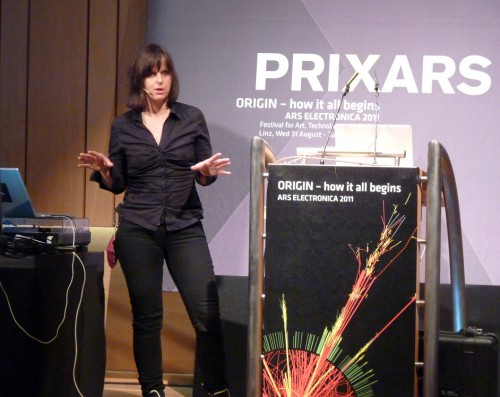Potential questions for the sound artist who captures field recordings: do you already have an idea of what something sounds like before possibly making a great effort to get to the sound in order to record it? If you don’t know what it sounds like, is there some deeper reason to go hunting for such sounds? If you do have a general idea of what the specific sound is like, will an already existing online archive of that particular sound serve your purpose? Once you’ve reached the origin of the sound that you’ve imagined, what happens if it doesn’t exhibit the sound quality that you envisaged? Was your trip a wasted effort? These questions seem reasonable when it comes to trying to understand the motivation of someone willing to, for example, stand on dangerously shifting and melting ice slabs in order to get the sound of 10,000-year-old melting ice.
Jana Winderen‘s background is in chemistry, mathematics and fish ecology. This could provide a peek into her interests in finding sound in the audio topography of the ocean – searching deep into hidden sources in order to present to us the fragility of complex marine ecosystems. Once gathered, sounds of the icy landscape, crustaceans, various fish, as well as sounds of the crackling ice itself are then moulded into descriptive soundscapes that create a fascinating audio snapshot of a frigid world that very few of us will ever experience. Her CD is available thru Touch.
(thanks to Ars Electronica)
